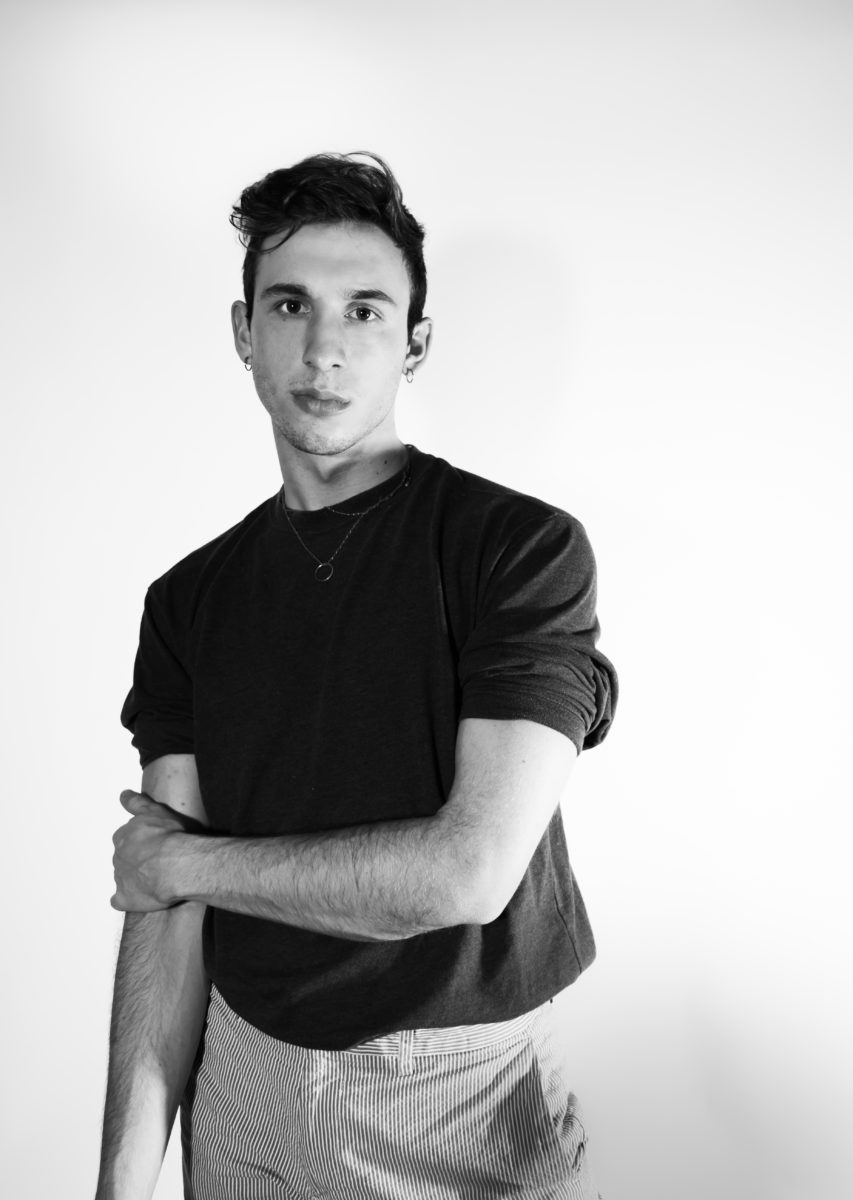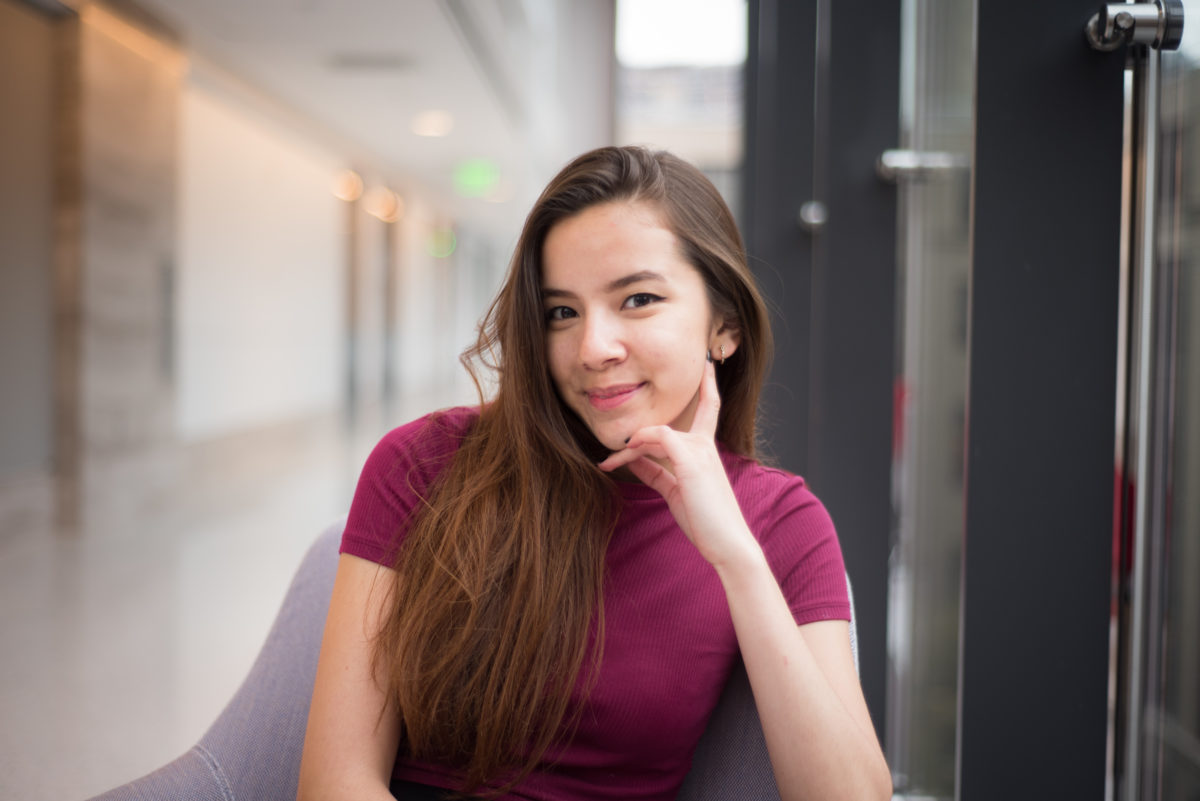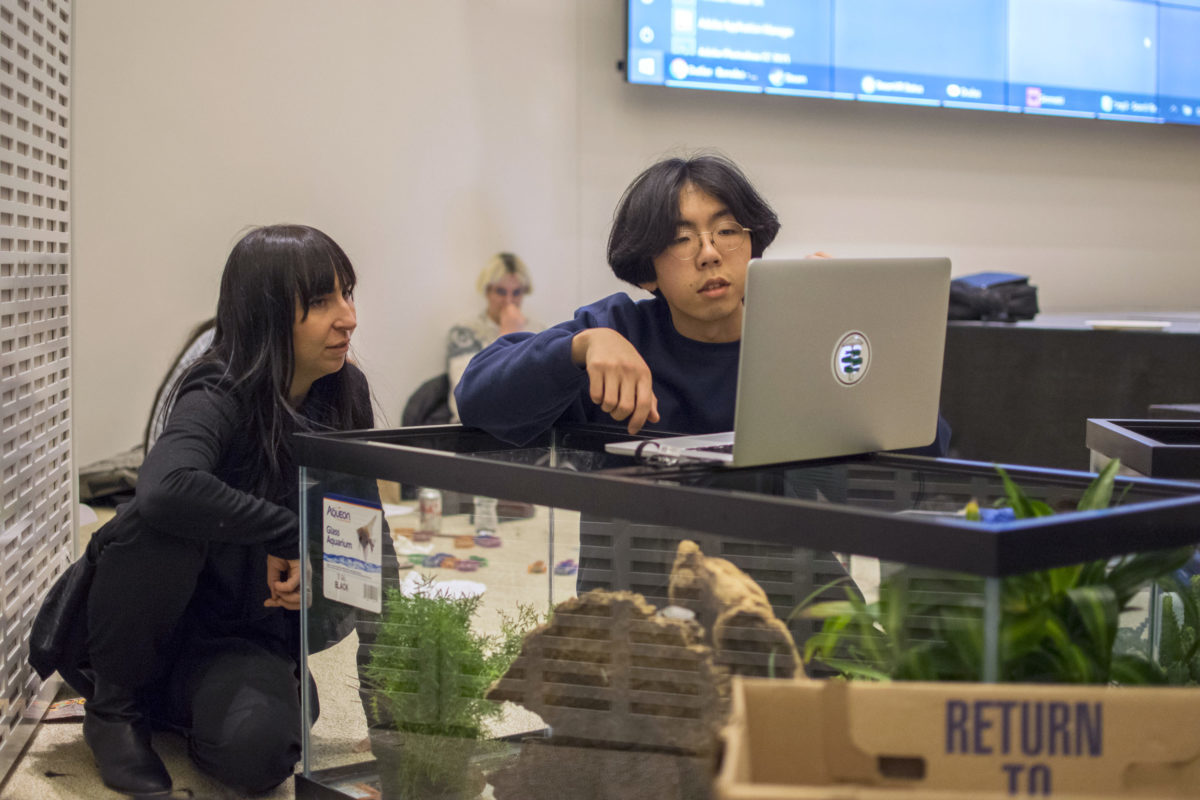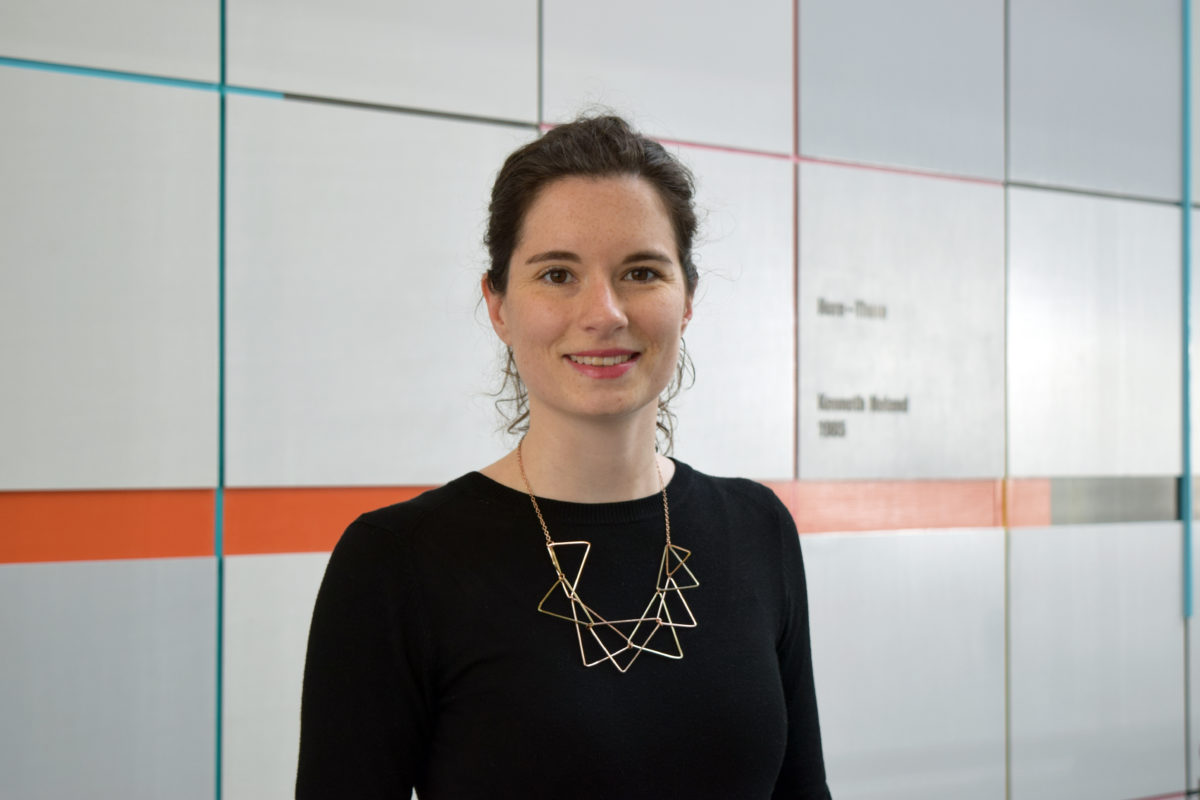Undergraduates Amalia Lee and Garrett Souza, and Graduate Students Pip Mothersill and Gary Zhexi Zhang
Students make myriad contributions at MIT through art. Some set a new level of excellence with their superior talent, dedicated work ethic, and exemplary performance skills. Others venture into unexplored currents where art, technology, and science swirl. Still others form new spaces for creativity that enrich campus life.
These outstanding achievements in and contributions to the arts at MIT are recognized in the annual Laya and Jerome B. Wiesner Student Art Awards. Established in 1979, the award honors undergraduate and graduate students who are nominated by members of the faculty and staff. Prize winners each receive $2,000.
This year’s winners span a wide creative spectrum, including digital tool maker, editor of an on-campus fashion magazine, artist and arts activist, and vocalist. While operating in diverse disciplines, each student uses their art to create connections—between audience and performer, surface and substance, and policy and practice. These 2019 Wiesner Award recipients enrich the MIT experience, and inspire others to apply their gifts and skills.
Amalia Lee, ‘19
A gifted and versatile vocalist, Amalia Lee is a kind of musical bee—sharing her talents and energy across many genres of music performed at MIT. The joint Materials Science/Engineering and Music Major sings in the MIT Vocal Jazz Ensemble and MIT Chamber Chorus, and she has performed solo recitals with a repertoire and technique worthy of the finest music conservatories. She even sang the role of Ariel in her dormitory musical.
“I’ve had so much satisfaction working in music at MIT,” says Lee, who is an Emerson Fellow. “But the greatest of these has been the awe I’ve felt collaborating with the many talented musicians here, both in the classical and jazz realms.”
Lee believes music, particularly live music, can generate empathy in both performer and audience. “As a performer, you have to find the core of the experience you’re singing about,” says Lee, whose May 2019 solo recital features an aria from Richard Strauss’ opera, Ariadne Auf Naxos. “And you also need to perceive where your audience is at. People come to a concert with different emotional states. I think music has the power to address those.”
Garrett Souza, ‘19
The driving force behind several student-led arts initiatives, Garrett Souza has ferried creativity into a new realm at MIT as editor-in-chief of Infinite Magazine. The biannual publication features student designs for fashion and apparel, along with photography, traditional arts, body painting, and tattoos. “I hated fashion in my first years here,” says the Computer Science and Electrical Engineering major. “But as I grew more into myself at MIT, I saw it as a wonderful avenue for expression.”
Under Souza’s direction, the number of contributors to the magazine has more than doubled; the spring ’19 issue featured fashion spreads, images, and cultural critiques from 50 students. Souza is also founder of MIT Design Week, a multi-day function held in various campus venues this April that highlights MIT student creativity.
“MIT sits at a rare intersection of technology and culture,” says Souza. “We’re not going to produce the type of art and culture coming out of a typical liberal arts college. We’ll produce something that is uniquely MIT.”
Pip Mothersill, Final Year Graduate Student, Media Lab (Object-Based Media Group)
Born and educated in the United Kingdom, Pip Mothersill lives and thrives at the junction of design and engineering. She studied aeronautical engineering at the University of Bristol, then moved to the Royal College of Art to study industrial design. “I love being the conduit, the translator, between these two disciplines,” says Mothersill. “To connect the dots between various approaches to solving problems, and the people solving them.”
At the Media Lab, Mothersill has been a quiet but constant advocate for students who want to integrate the arts and creativity into their work. A creator of digital tools, she focuses on user-experience and functionality—skills she honed during her years in industry.
“Designers usually excel at shifting scale, at leaping from 10mm to 10,000 feet,” she explains. “This is an invaluable skill in helping to meet some of the massive challenges we face. But too often our decisions are driven by a need to quantify. I’d like to offer an alternative path where designers can stop and contemplate, where they can live comfortably in ambiguity.”
Gary Zhexi Zhang, Second Year Graduate Student, Program in Art, Culture and Technology (ACT)
“I didn’t want to go back to an art school environment for grad school,” says Gary Zhexi Zhang, who studied painting and printmaking at Scotland’s Glasgow School of Arts. “Instead I came to MIT to explore thousands of other resources. And because I wanted to be somewhere where I felt a little out of place.”
Zhang has made the MIT campus his own. He founded Mutual Pictures, a monthly dinner series where filmmakers screen their works and receive critiques. He is also co-founder and the driving force behind The February School, a student-run peer-to-peer learning and discussion space open to the MIT community and the public in the Stratton Student Center. The February School has explored a range of topics, including gardening, malware, and reparations for slavery in South Africa.
“There is an idea that MIT is frequently about production, about making things,” says Zhang. “Our idea was to create a space that was more contemplative, critical, and reflective.”
Written by Ken Shulman
The Council for the Arts at MIT presents several awards annually to MIT students who have demonstrated excellence in the arts.




